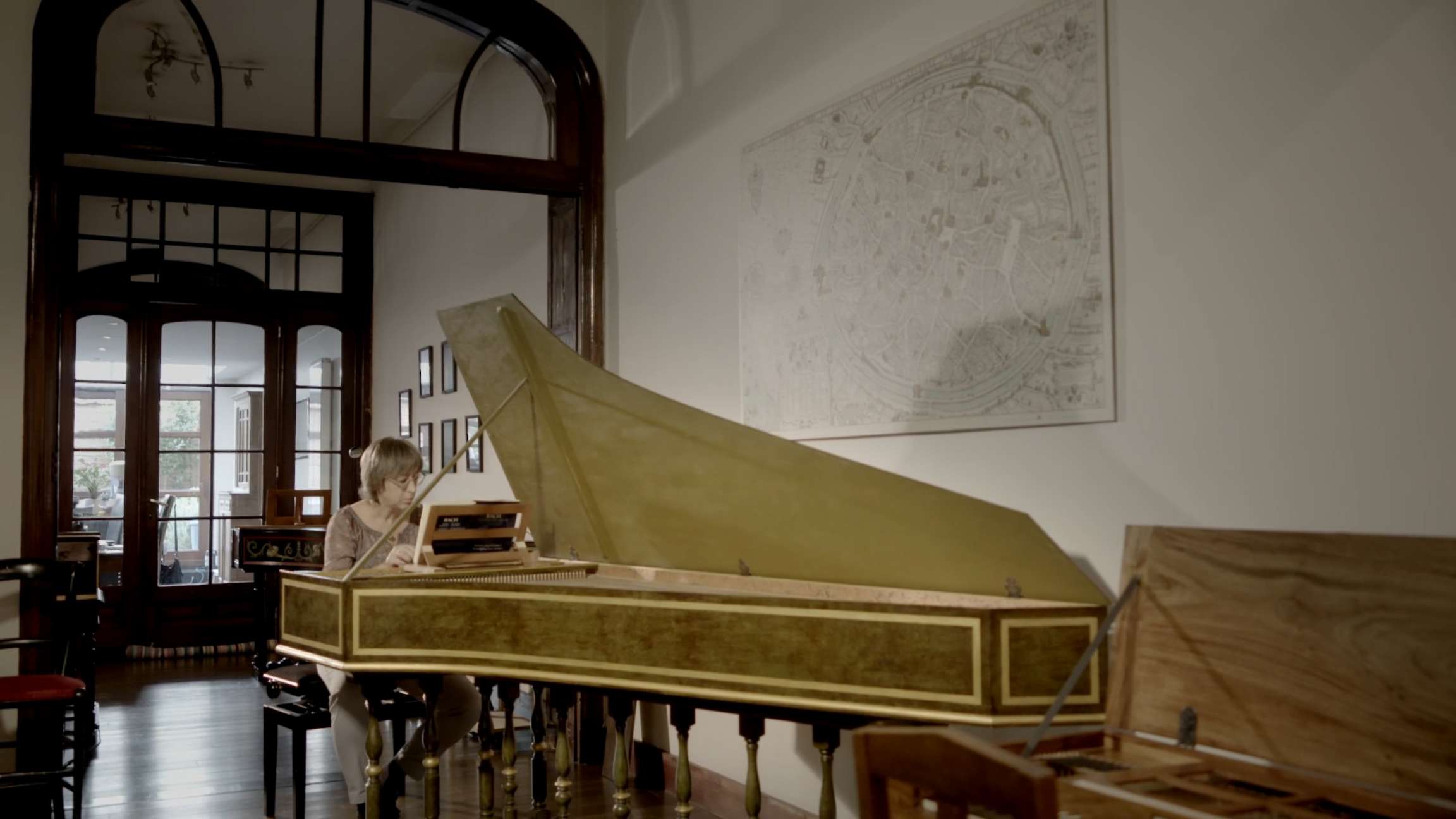

The Well-Tempered Clavier I No. 22 in B-flat minor
BWV 867 performed by Kris Verhelst
at home in Antwerp, Belgium
Behind the music
Terra incognita
On his journey through all the keys, Bach sometimes visits very exotic places
It’s all part of the challenge. If – like Bach – you want to write in all the keys, you will eventually get into ‘trouble’ in a historical tuning. Precisely why you would do so is a rather technical story, but it can be summed up as follows. So as not to make too many compromises, a few keys sound almost perfect (the most prevalent), many keys sound very pleasant (the harmonic excursions) and finally a few keys sound really strident. And Bach knew this, of course. On reaching B-flat minor (with five flats one of the exceptional keys), he appears to have chosen a warm, subdued and enchanting approach – maybe to soften the nasty ‘falsifications’ somewhat.
‘Trouble’ was put in inverted commas above because it is precisely that tense tuning that makes this pair of works. In this performance, the tempo of the prelude is therefore slow, enabling Kris Verhelst to give plenty of scope to the sometimes unexpected twists, especially for those listening carefully to how the accompanying chords are constructed. The swaying rhythm creates a meditative atmosphere. It is followed by one of the strictest fugues in the Wohltemperirte Clavier, on a theme that is stretched to the limit. Despite the big leap and the taut structure – Bach follows all the rules of the early Renaissance style – here too the overtone is one of mildness. Just listen to how he keeps juxtaposing parts in a way that they create undulating strings of notes together. Just before the end, Bach notches up the tension again by having the five parts play the theme once more in rapid succession.
Das Wohltemperirte Clavier, BWV 846-893
Composing 48 keyboard pieces in all 24 keys was the sort of challenge Bach enjoyed. In each of the two parts of the Wohltemperirte Clavier, he brought together the musical couple prelude and fugue 24 times; twelve in minor keys and twelve in major. In the preludes, he gave free rein to his imagination, and demonstrated mathematical tours de force in the fugues. In contrast to the iron discipline Bach had to apply to his church compositions, here he could abandon himself to intellectual Spielerei without worrying about deadlines.
The first part of the Wohltemperirte Clavier dates from 1722, although it contains some music that was written in the preceding five years. There is less clarity about the history of part two. Bach compiled this second manuscript only around 1740, although once again some of the preludes and fugues it contains date from a much earlier period. Bach described the target group for this collection of pieces as follows: ‘Zum Nutzen und Gebrauch der Lehr-begierigen Musicalischen Jugend, als auch dere in diesem studio schon habil seyenden besonderem ZeitVertreib’ (For both the education of the industrious musical youngster and the enjoyment of those well-versed in this material’).
- BWV
- 867
- Title
- Prelude and fugue in B-flat minor
- Epithet
- no. 22 from Das Wohltemperirte Clavier I
- Instrument
- harpsichord
- Genre
- harpsichord works
- Serie
- Das Wohltemperirte Clavier I
- Year
- 1722 or earlier
- City
- Köthen (or Weimar?)
With support from
Prins Bernhard Cultuurfonds
Extra videos
Vocal texts
Original
Translation
Credits
-
- Release date
- 17 March 2017
-
- Recording date
- 17 September 2016
-
- Location
- Antwerp, Belgium
-
- Harpsichordist
- Kris Verhelst
-
- Harpsichord
- Emile Jobin after Johannes Daniel Dulcken, 1747
-
- Director
- Jan Van den Bossche, Hanna Schreuders
-
- Music recording, edit and mix
- Guido Tichelman
-
- Camera and interview
- Gijs Besseling
-
- Producer
- Hanna Schreuders
-
- With support from
- Prins Bernhard Cultuurfonds
Discover
Help us to complete All of Bach
There are still many recordings to be made before the whole of Bach’s oeuvre is online. And we can’t complete the task without the financial support of our patrons. Please help us to complete the musical heritage of Bach, by supporting us with a donation!

